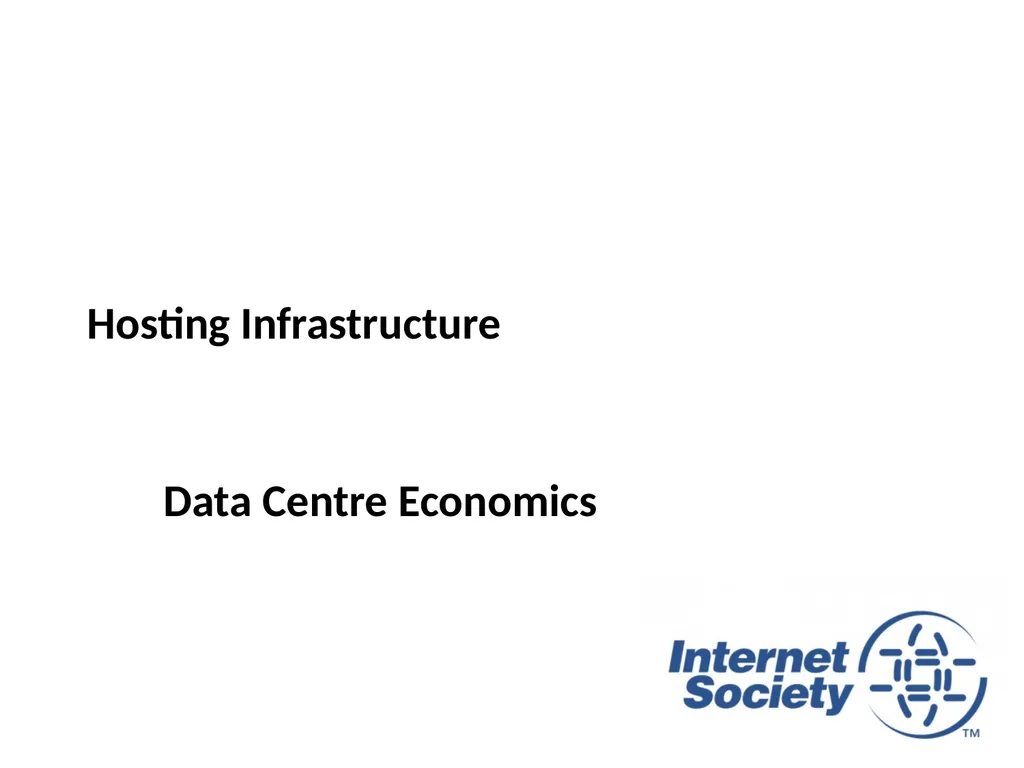Hosting Infrastructure Data Centre Economics THE
Author : natalia-silvester | Published Date : 2025-06-23
Description: Hosting Infrastructure Data Centre Economics THE IT LIFECYCLE The IT Lifecycle is 35 years before a refresh is required Data Centre infrastructure has a 5 year lifecycle before reinvestment is required We often think that small
Presentation Embed Code
Download Presentation
Download
Presentation The PPT/PDF document
"Hosting Infrastructure Data Centre Economics THE" is the property of its rightful owner.
Permission is granted to download and print the materials on this website for personal, non-commercial use only,
and to display it on your personal computer provided you do not modify the materials and that you retain all
copyright notices contained in the materials. By downloading content from our website, you accept the terms of
this agreement.
Transcript:Hosting Infrastructure Data Centre Economics THE:
Hosting Infrastructure Data Centre Economics THE IT LIFECYCLE The IT Lifecycle is 3-5 years before a refresh is required. Data Centre infrastructure has a 5 year lifecycle before reinvestment is required. We often think that small businesses have very different challenges to large corporates, and in many senses, that’s true. However, when it comes to managing your IT infrastructure, each organization, no matter what size, has its own specific needs as they move through the IT lifecycle of any organization facing economic growth. COLOCATION ABC According to Info-Tech Research Group, 64% of organizations engage in some form of data centre colocation services. In addition, Gartner has observed more and more enterprises enlisting colocation services, and the research firm has identified several reasons behind this trend. Colocation is a physical facilities option for your IT infrastructure Deployment of IT assets in a colocation facility provides the advantages of: Shared power and cooling infrastructure Security and resilient architecture Reduced Capital Investment Risk By renting space for IT assets, but keeping ownership and control, organisations can expand quickly and still maintain the stringent quality, resiliency and security requirements of the ideal IT infrastructure. Colocation Considerations Whether building or buying/leasing a facility, there are basic fundamental questions that need to be considered. Does the site have sufficient capacity for initial population as well as future expansion? What is the risk of disruption due to natural disaster or security breaches? Is the site near diverse routes for multiple carriers? Is the site easily accessible by technicians/customers? What is the power availability at the site? Is it scalable over the term of the life of the facility? What standards does/will the site conform to, and what is the guaranteed/expected availability, covered by SLA? Is the site certified for design standards, as well as operational standards? (ISO, PCI-DSS, Uptime Institute, TIA) What security procedures and controls will be/are available? Is there/Will there be detailed, continuous monitoring and measurement of all critical components? Is this information available? Are the facility policies open, and is the facility owned by a competitor? How easy will it be to interconnect to other networks? Structured cabling? 24/7 On-site support or remote-hands? When to consider Colocation: Geography Organizations that operate across a vast geography, whether provincial, national or continental, require a well-situated and well connected central location. Necessary Requirements Cooling, power or weight requirements within facilities are vital, and it’s extremely expensive to














